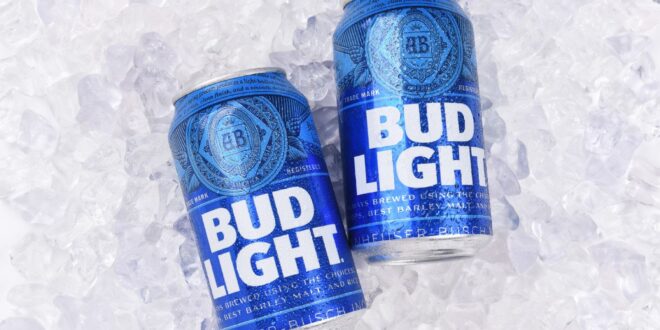In modern day, brands have to play a tricky game of navigating political fields. It can be extremely beneficial or detrimental to a brand’s image when they decide to publicly support a political movement that is considered controversial. The Harvard Business Review mentioned that in the past, companies tended to avoid political topics whenever possible. However, after the movement in the 1980’s advocating for corporate social responsibility, the narrative has started to change. Some still say that it is best practice for companies to avoid supporting any company, celebrity, or political figure that makes strong political statements, but that has become increasingly difficult in today’s society. Almost anything can be taken as a political statement and groups of people are always left angry. Bud Light has recently found itself in the midst of a political controversy and responses from consumers have been extremely negative.
What happened?
The controversy began when Bud Light, in an attempt to increase their inclusivity, reached out to a popular influencer, Ms. Dylan Mulvaney, for a sponsorship. Dylan is a well-known advocate for transgender rights- a good portion of her content involves sharing her experiences as a transgender woman and her process of transitioning. For this sponsorship, Dylan promoted a $15,000 giveaway Bud Light was hosting in celebration of March Madness, and Bud Light also sent Dylan a customized tallboy with her face on it.
After this video was posted, a multitude of people against the LGTBQ+ community came forward expressing their anger at Bud Light for hiring a transgender woman as a spokesperson for the brand. In an outrage, many people began speaking negatively about the brand, boycotting their products, and some even publicly destroying the product; musician Kid Rock went as far to post a video on social media shooting at cases of Bud Light.
Mulvaney stated that during this backlash, she received a large amount of hate and transphobia online, and even had to deal with cases of stalking, while Bud Light remained silent and failed to defend the influencer that they hired. Instead, the response from Bud Light was a brief statement where they apologized for being a part of a discussion that divided people and wanted to stand behind the American values and consumers that support them. This response, in turn, received a lot of criticism from supporters of Mulvaney and the LGBTQ+ community as a whole. They were enraged that Bud Light would hire a transgender influencer and fail to stand with her. Dylan even felt the need to flee the country for a while after receiving such a large amount of hate.
Ultimately, Bud Light ended up having consumers on both ends of the political spectrum angry at their company for how they handled the situation. This caused their company’s sales to plummet to the point of losing their #1 spot as the top-selling beer. The Human Rights Campaign, an organization working for LGBTQ+ rights, even took Anheuser-Busch off of their list of “Best Places to work for LGBTQ+ Equality”.
How Can Brands Navigate Situations Like This?
It can be extremely difficult for companies to avoid any sort of political statement, but there are ways brands and PR professionals can navigate the political sphere and repair their image after a political scandal. Benoit’s image restoration theory proposes 5 methods for restoring a company’s reputation:
- Denial: A company could deny all accusations made against them. However, unless the accusations have no evidence behind them, or the company has evidence contradicting the accusations, this often can fail as an image restoration strategy. There may still be a small group of people that follow the company blindly, but is overall not the best strategy to use without evidence.
- Evading Responsibility: Budlight’s strategy to address their controversy seemed to be evading responsibility. This clearly did not work for their company. Evading responsibility would likely be more effective if a company is not in the limelight of news outlets, social media, etc. If an issue did not receive much coverage, a company could completely avoid speaking out about it, or respond vaguely, and shove the issue under the rug. While it may not be the most morally sound strategy, it can be effective on occasion.
- Reducing Offensiveness: Brands can come forward with statements denying the severity of their controversy. They can try and spin the issue into a more positive light or rationalize the mistake that was made.
- Corrective Action: A company can attempt to correct the mistake that was made through whatever means possible. They can also promise to prevent a similar issue from occurring again. This can make a company look regretful for their actions and seem like they want to do better.
- Mortification: Lastly, a company can completely admit fault and essentially beg for forgiveness. If there are truly no means to improve the situation, an honest apology can still win over some consumer’s hearts.
What strategy would you have used for Bud Light’s controversy?
 SIU PRSSA Southern Illinois University Public Relations Student Society of America
SIU PRSSA Southern Illinois University Public Relations Student Society of America




